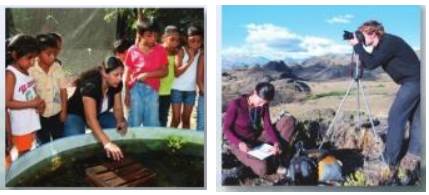Hãy nhập câu hỏi của bạn vào đây, nếu là tài khoản VIP, bạn sẽ được ưu tiên trả lời.

Our environment is at stake. Water, air pollution, forest fires ... are getting more and more serious. And this will significantly affect our life. Therefore, each person needs to have a sense of environmental protection. In particular, schools and students also need to raise their awareness. As students, we can do small things to protect the environment such as disposing of trash in the right place, not littering. We can have street cleaning sessions. In addition, students also need to propagate to people not to litter waste indiscriminately, propagate about the harmful effects of environmental pollution. On the side of the school, there should be rules about school sanitation, organizing for students to clean the school so that it is always clean. The above are things that students and schools can do to protect the environment. Let's join hands for a clean environment
Tham khảo nha bạn

Marine pollution is a growing problem in today’s world. Our ocean is being flooded with two main types of pollution: chemicals and trash.
Chemical contamination, or nutrient pollution, is concerning for health, environmental, and economic reasons. This type of pollution occurs when human activities, notably the use of fertilizer on farms, lead to the runoff of chemicals into waterways that ultimately flow into the ocean. The increased concentration of chemicals, such as nitrogen and phosphorus, in the coastal ocean promotes the growth of algal blooms, which can be toxic to wildlife and harmful to humans. The negative effects on health and the environment caused by algal blooms hurt local fishing and tourism industries.
Marine trash encompasses all manufactured products—most of the plastic—that end up in the ocean. Littering, storm winds, and poor waste management all contribute to the accumulation of this debris, 80 percent of which comes from sources on land. Common types of marine debris include various plastic items like shopping bags and beverage bottles, along with cigarette butts, bottle caps, food wrappers, and fishing gear. Plastic waste is particularly problematic as a pollutant because it is so long-lasting. Plastic items can take hundreds of years to decompose.
This trash poses dangers to both humans and animals. Fish become tangled and injured in the debris, and some animals mistake items like plastic bags for food and eat them. Small organisms feed on tiny bits of broken-down plastic, called microplastic, and absorb the chemicals from the plastic into their tissues. Microplastics are less than five millimeters (0.2 inches) in diameter and have been detected in a range of marine species, including plankton and whales. When small organisms that consume microplastics are eaten by larger animals, the toxic chemicals then become part of their tissues. In this way, the microplastic pollution migrates up the food chain, eventually becoming part of the food that humans eat.
Solutions for marine pollution include prevention and cleanup. Disposable and single-use plastic is abundantly used in today’s society, from shopping bags to shipping packaging to plastic bottles. Changing society’s approach to plastic use will be a long and economically challenging process. Cleanup, in contrast, may be impossible for some items.
Nonetheless, many countries are taking action. According to a 2018 report from the United Nations, more than sixty countries have enacted regulations to limit or ban the use of disposable plastic items.
CHÚC BẠN HỌC TỐT!!
 A. Look at the photo. Answer the questions.
A. Look at the photo. Answer the questions.
bậy quá !
1 the boobs
2. the penis